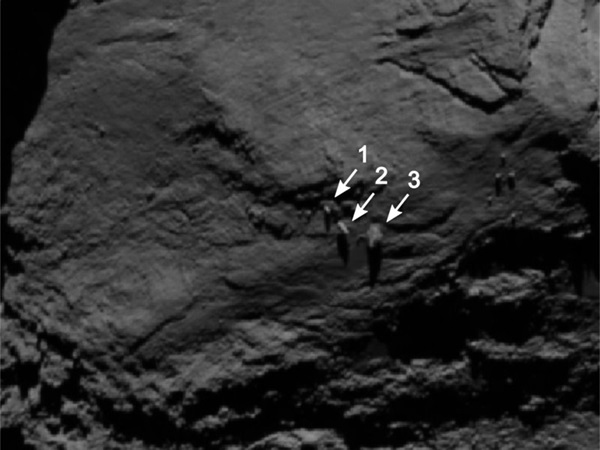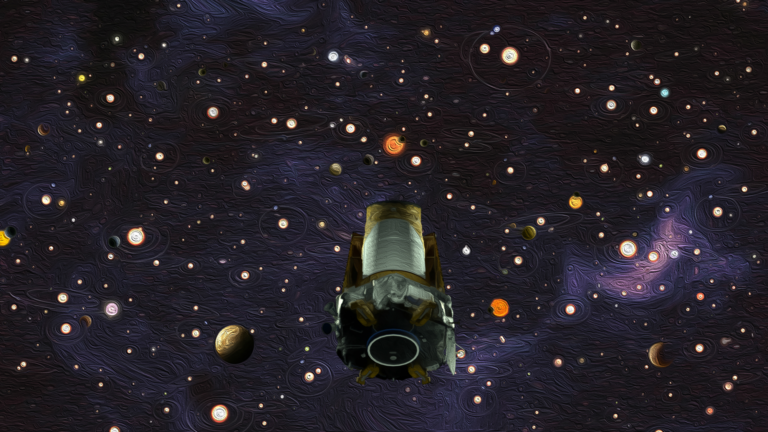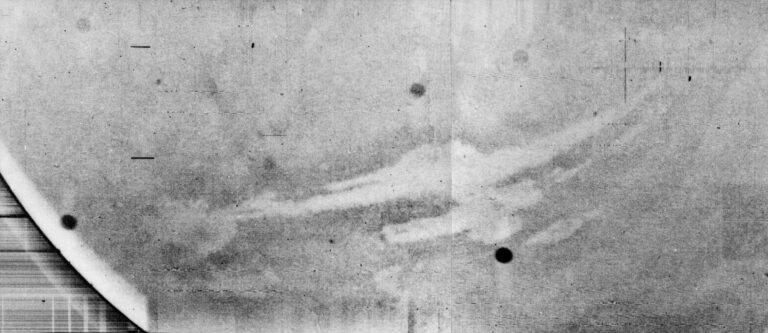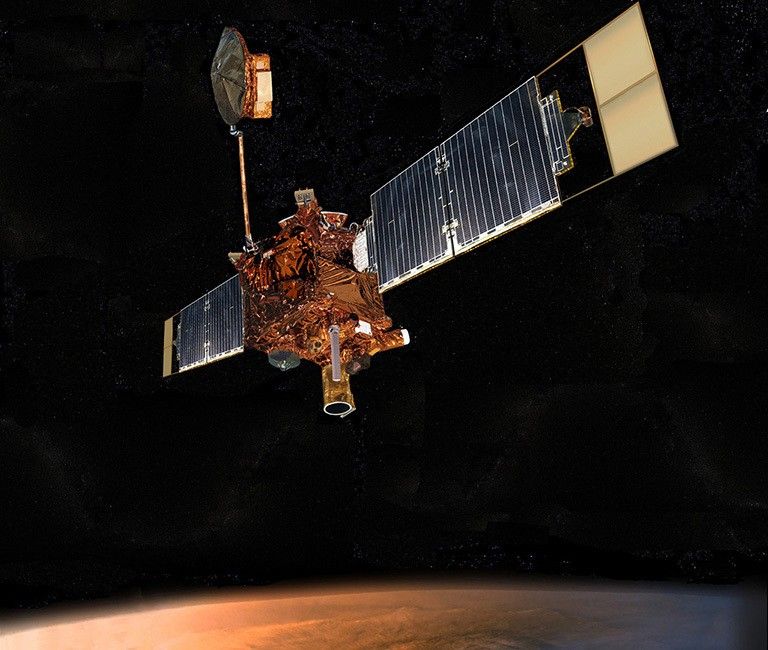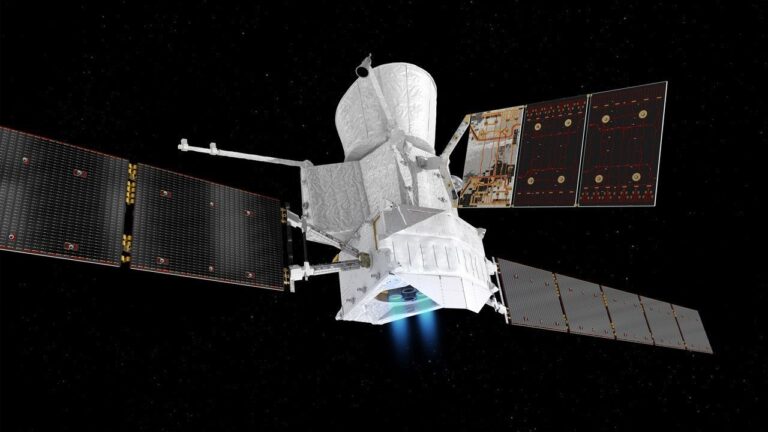Key Takeaways:
Scientists from Rosetta’s OSIRIS team have discovered an extraordinary formation on the larger lobe of comet 67P/Churyumov-Gerasimenko in the Aker region. From a group of three boulders, the largest one with a diameter of approximately 98 feet (30 meters) stands out: images obtained September 16, 2014, from a distance of 18 miles (29 kilometers) with the help of Rosetta’s scientific imaging system OSIRIS show it to perch on the rim of a small depression. There seems to be only a small contact area with the nucleus.
Similar geological formations are found also on Earth. So-called balancing rocks touch the underground with only a tiny fraction of their surface and often look as if they may tilt or topple over any moment. Some can actually be rocked back and forth and are then referred to as “rocking stones.” Impressive examples of balancing rocks occur in Australia or the southwest of the USA. Often these boulders traveled to their current location aboard glaciers. In other cases, wind and water eroded softer material surrounding the rock.
“How the potential balancing rock on the comet was formed, is not clear at this point,” said Holger Sierks from the Max Planck Institute for Solar System Research (MPS) in Germany. It is also possible that transport processes did their part on 67P. The comet’s activity may cause such boulders to move and thus reach a new location.
“We had noticed this formation already in earlier images,” said Sebastien Besse from the European Space Agency (ESA), who discovered the possible balancing rock. “However, at first, the boulders did not seem to differ substantially from other we had seen.” Scattered boulders can be found in many places on the comet’s surface. One of the largest ones measures approximately 150 feet (45 meters). In reference to the Egyptian pyramids, the scientists dubbed it “Cheops.” Other regions on 67P resemble a rubble pile and are practically covered by boulders.
“Interpreting images of the comet’s surface can be tricky,” said Sierks. Depending on the viewing angle, illumination, and spatial resolution, very different and sometimes even misleading impressions are created.
For example, in an image taken August 16, 2014, from a larger distance of 65 miles (105km), one of the smaller boulders in the balancing rock formation appears to be protruding like a pillar. Images of the same region taken September 19, 2014, however, cannot confirm this impression.
The OSIRIS scientists intend to continue to monitor the potential balancing rock carefully. New images might give insights into its true nature and maybe even its origin.

